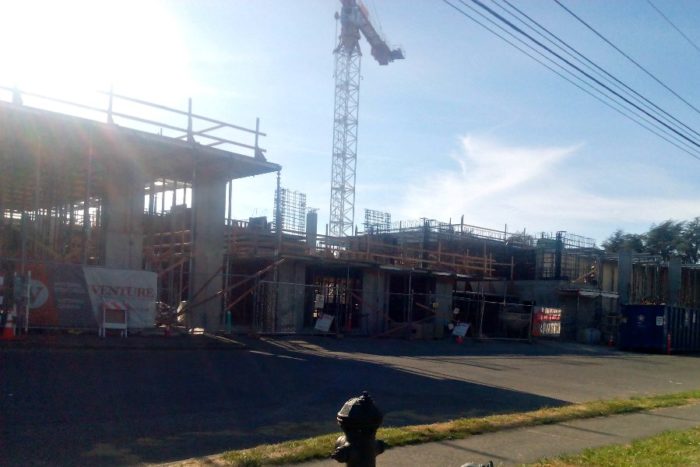
Despite being situated in the opposite ends of the world, Kathmandu and Seattle have many things in common. Both are rapidly growing cities and so are their problems. The challenges faced by the people in both the cities are similar. Amidst hundreds of problems faced by millions of people living in these cities, increasing house rents is one of the major challenges. An interesting comparison can be drawn up between a prominent city like Seattle and a gradually developing South Asian city like Kathmandu.
“The rent rate can vary to a large extent in a same place in Kathmandu. It completely depends on the whim of the landlord to fix the rent of his place. The tenants have to comply with the owner or leave the place.” Says Kishor Mahat, student living in Kathmandu for last 10 years. He also said that he has changed his residence 6 times in the past 10 years.
Far away from Kathmandu, people in Seattle face similar problems. Increase in rent is not limited to affecting just the tenants, it also impacts the small business entities. “With the increase in rent, it has been difficult for us to do business,” says Diem, owner of the Huong Duong restaurant in Othello. “Because of this, we have to increase the price of the food items. Customers always don’t understand this and there is the risk of losing customers.”
Rent Jungle, a leading online search engine for rental housing writes “As of May 2016, average apartment rent within the city of Seattle, WA is $2146. One bedroom apartments in Seattle rent for $1969 a month on average and two bedroom apartment rents average $2739.” According to numbeo.com, a famous website, rent of an apartment (1 bedroom) in City Centre in Kathmandu costs 13,200.00 N₨ ($132) per month. According to the same website “Rent in Nepal is 92.04% lower than in United States.” The house rent in both the cities is high in comparison to the average income. According to Seattle.gov, over 45,000 Seattle lower-income families spend more than half their income on housing. On the other side, people in Kathmandu spend as high as 45% of their income in house rent according to Prakash Aryal, President of the Renters Association of Nepal, an organization formed by the renters in Kathmandu. To understand the surge in the house rent, it is important to look for the reasons behind it.
Increase in the house rent in Kathmandu is due to many reasons. One of the main reasons behind this is the inflow of large number of people to Kathmandu, looking for opportunities. This huge flow of people into the city decreases the availability of the housing. This leads to the basic economic situation where demand exceeds the supply of the proper houses to live, which ultimately increases the house rent. The other major reason is the inflation. The inflation in Nepal is considerably high reaching up to 12.1% in Jan 2016 according to Nepal Rastra Bank (Central Bank of Nepal). This burden is passed on to the renters by the landlord.

However on the other side, Seattle is going through the phase of tech boom. Inflow of the wealthy young people has increased the prices of the every goods in the city significantly. This has led to the housing bubble in the city which ultimately forces the low and middle income people out in the open.
“The soaring house rent (in Kathmandu) is one of the toughest challenges faced by this city in decades. The landlords increase the house rents on whims,” says Aryal. Worsening the predicament is the fact that Kathmandu city has no government body that regulates house rents. “We tried to register our (renters association of Nepal) at the District Administration Office, but the officers objected saying there were no provisions to register such an association,” added Aryal.
On the other hand, Seattle has associations like Tenant’s Union that tries to address the various issues faced by the tenants in the city. They offer a plethora of services to the renters that include providing suggestions with regards to moving into a house, vacating and relocating, help during the period of tenancy, and to people who face housing discrimination of any kind.
In Seattle, Mayor’s Housing Affordability and Livability Agenda (HALA) has proposed certain ideas for solving the problem. HALA is guided by an ambitious 10-year goal for producing 30000+ market-rate units and 20000+ guaranteed affordable housing units. However, Government of Nepal has not taken any significant initiative in addressing these problems. Will the Nepal government realise the gravity of the situation ?
This story was produced by a student in the “Study of the U.S. Institute (SUSI)” program, a collaboration between The Seattle Globalist and FIUTS, supported by the U.S. Department of State. The program brings 20 undergraduates from Sri Lanka, India, Bangladesh and Nepal to Seattle. Participants study journalism and new media, and participate in volunteer and service activities, leadership workshops, and cultural excursions. The story is an example of student work and has not yet been through the Seattle Globalist’s standard editing and fact-checking process.

